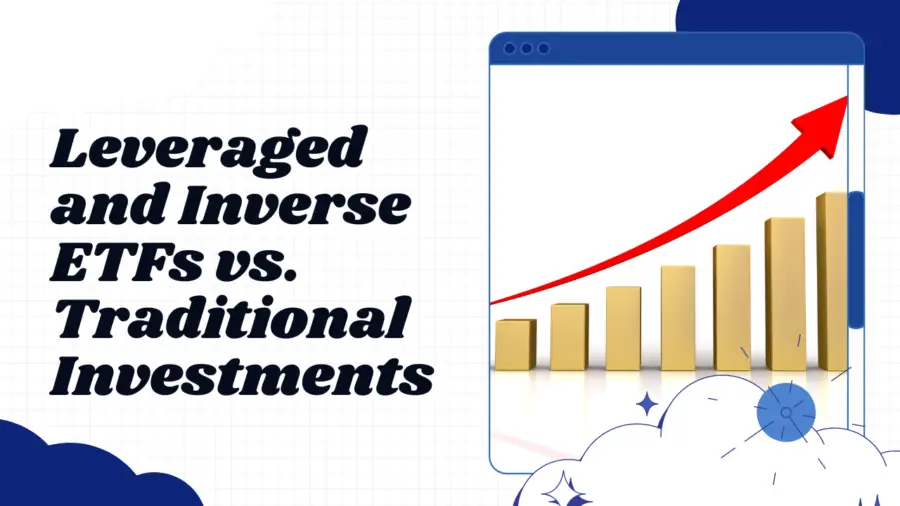As the investment landscape evolves, investors are presented with a diverse array of options, including traditional investments, leveraged ETFs, and inverse ETFs. Understanding the characteristics, risks, and potential rewards of each is crucial for informed decision-making. Let’s explore and compare these investment strategies.
1. Traditional Investments:
- Stability and Long-Term Growth: Traditional investments, such as stocks and bonds, are known for stability and long-term growth potential. Investors seeking a conservative approach often allocate a portion of their portfolio to these assets for steady returns.
2. Leveraged ETFs:
- Amplified Returns and Risks: Leveraged Exchange-Traded Funds (ETFs) aim to amplify returns by using financial derivatives and borrowing. While they offer the potential for enhanced gains, the leverage also magnifies losses. Investors should carefully consider their risk tolerance and the impact of compounding over time.
3. Inverse ETFs:
- Profiting from Market Declines: Inverse ETFs are designed to move in the opposite direction of an underlying index or asset. They provide a tool for investors to profit from market declines or hedge against downturns. However, the compounding nature of daily resets can impact long-term performance.
4. Risk and Volatility:
- Risk Profile Variation: Traditional investments are generally considered less risky, with their value tied to the performance of the underlying asset. Leveraged ETFs introduce a higher level of risk due to the use of financial derivatives, which can lead to amplified losses. Inverse ETFs carry their own set of risks, especially in trending markets where losses can accumulate.
5. Market Timing and Short-Term Focus:
- Short-Term vs. Long-Term Strategies: Leveraged and inverse ETFs are often employed for short-term trading strategies due to their daily reset mechanism. Traditional investments, on the other hand, are typically part of long-term investment plans. Successfully timing the market is crucial for the effectiveness of leveraged and inverse ETFs.
6. Liquidity and Trading Volume:
- Consideration for Market Participants: Traditional investments, particularly in large-cap stocks and major bonds, tend to offer high liquidity and trading volume. Leveraged and inverse ETFs may experience lower liquidity, impacting the ease of buying and selling, especially during volatile market conditions.
7. Diversification:
- Diversifying Risk: Traditional investments allow for diversified portfolios, spreading risk across different asset classes. Leveraged and inverse ETFs are more specialized and may not provide the same level of diversification, making them suitable for specific market conditions.
8. Costs and Fees:
- Expense Ratios and Tracking Costs: Traditional investments typically have lower expense ratios compared to leveraged and inverse ETFs. The latter may incur higher costs due to the use of derivatives and the need for daily rebalancing, impacting long-term returns.
9. Investor Sophistication:
- Suitability for Different Investors: Traditional investments are accessible to a wide range of investors, including beginners. Leveraged and inverse ETFs may require a higher level of sophistication and understanding of market dynamics, making them more suitable for experienced investors.
10. Tax Considerations:
- Tax Efficiency: Traditional investments may offer tax advantages, such as favorable treatment of long-term capital gains. Leveraged and inverse ETFs, due to their daily resetting mechanism, can result in higher tax liabilities, especially for short-term gains.
Conclusion: Tailoring Strategies to Objectives and Risk Tolerance
The choice between traditional investments, leveraged ETFs, and inverse ETFs depends on an investor’s objectives, risk tolerance, and time horizon. While traditional investments provide stability and long-term growth, leveraged and inverse ETFs cater to those seeking amplified returns or the ability to profit from market declines. Investors should carefully assess their financial goals and risk appetite before incorporating these strategies into their portfolio. A well-balanced approach, considering the unique characteristics of each investment type, can contribute to a diversified and resilient investment strategy.





